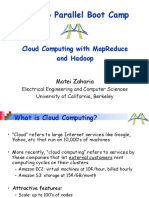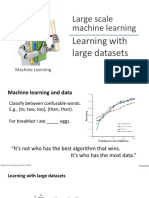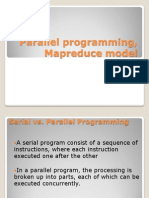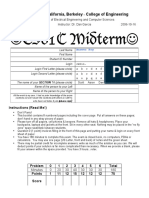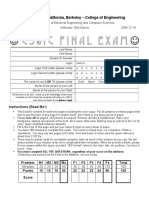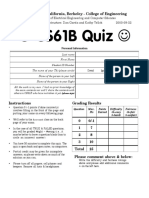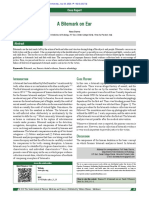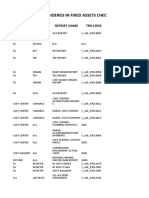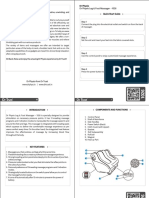0% found this document useful (0 votes)
59 views33 pagesLinear Learning With Allreduce: John Langford (With Help From Many)
The document discusses linear learning algorithms for large datasets using parallel computing. It describes how AllReduce, a parallel algorithm, can be used to train linear models on terabytes of data across thousands of nodes in just 70 minutes. AllReduce averages model parameters across nodes efficiently using a tree reduction method. The author developed Vowpal Wabbit, an open source machine learning system, to implement various parallel learning algorithms like online gradient descent and L-BFGS using AllReduce. This allows the algorithms to scale to very large datasets robustly and quickly.
Uploaded by
juggleninjaCopyright
© © All Rights Reserved
We take content rights seriously. If you suspect this is your content, claim it here.
Available Formats
Download as PDF, TXT or read online on Scribd
0% found this document useful (0 votes)
59 views33 pagesLinear Learning With Allreduce: John Langford (With Help From Many)
The document discusses linear learning algorithms for large datasets using parallel computing. It describes how AllReduce, a parallel algorithm, can be used to train linear models on terabytes of data across thousands of nodes in just 70 minutes. AllReduce averages model parameters across nodes efficiently using a tree reduction method. The author developed Vowpal Wabbit, an open source machine learning system, to implement various parallel learning algorithms like online gradient descent and L-BFGS using AllReduce. This allows the algorithms to scale to very large datasets robustly and quickly.
Uploaded by
juggleninjaCopyright
© © All Rights Reserved
We take content rights seriously. If you suspect this is your content, claim it here.
Available Formats
Download as PDF, TXT or read online on Scribd
/ 33









